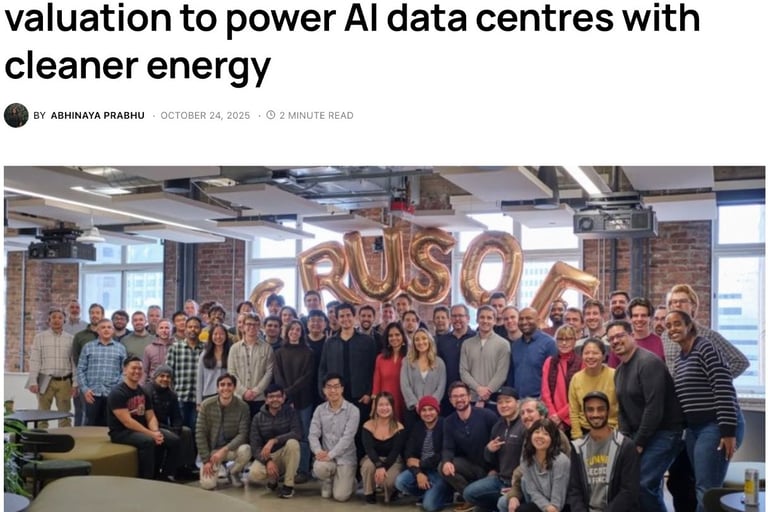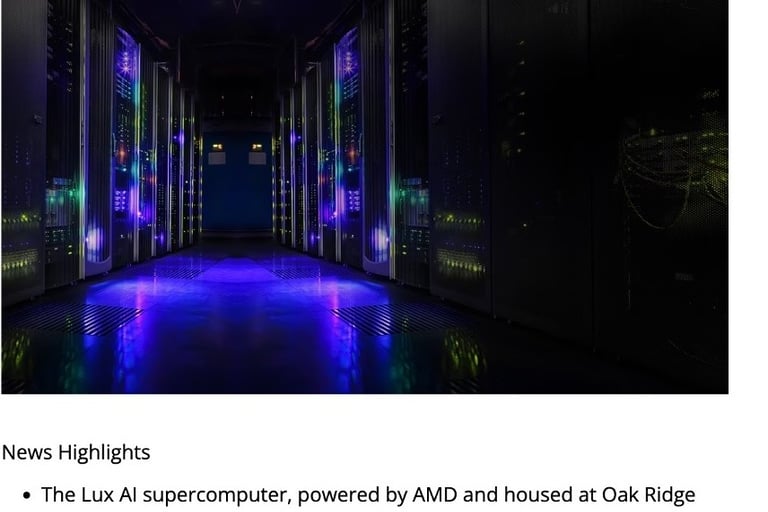From AI Narratives to Real-World Infrastructure: Capital Reconnects with the Physical World
Global Tech Investment Weekly – Week 4 of October
TxT Investment Team
10/29/20254 min read


TxT Perspective: Global Capital Converges on AI Engineering – Certainty After the Hype
As a science-driven investment team based in Oxford, TxT focuses less on short-term valuation swings and more on the physical limits of technology systems and the efficiency curves of capital deployment.
The AI wave continues to accelerate, yet true certainty lies not in new stories, but in progress that can be quantified, replicated, and engineered.
From the intersection of science and investment, three core themes define the next decade:
Sustainable Compute Infrastructure – Whoever can deliver more efficient and scalable AI infrastructure will capture the “compute dividend” of the AI era.
From Energy Consumption to Assets – Each technological iteration is turning energy efficiency into long-term asset value.
Industrialization of Scientific Research – The next generation of unicorns will not be those telling AI stories, but those capable of turning lab breakthroughs into reproducible production systems.
AI is not a virtual revolution; it is a new industrial revolution.
It reminds us that the future of technological value will again be anchored in the physical world – land, power, factories, and human ingenuity.
1. a16z’s $10 Billion Fund: The AI Narrative Enters Its “Reality Phase”
This week, Silicon Valley venture capital giant Andreessen Horowitz (a16z) announced plans for a new $10 billion fund, which is one of the largest VC raises globally in recent years.
Capital Allocation:
$6 billion for mature tech companies
$1.5 billion for AI application-layer innovation
$1.5 billion for AI infrastructure and model-training platforms
$1 billion for defense and manufacturing under the “American Dynamism” theme
TxT Analysis
In the past two years, a16z’s portfolio leaned toward narrative-driven AI – backing companies such as Character.ai (AI chat personas) and Jasper AI (automated content generation), betting on who could tell the next ChatGPT-style story.
Now, its focus has returned to the real-world structure of technology.
This strategic pivot shows capital shifting from “AI model + storytelling” toward implementation, infrastructure, and national resilience – prioritizing compute, energy, supply chains, and defense technology as the foundation of the AI economy.
2. From Energy Consumption to Assets: AI Redefines the Value of Power
U.S. company Crusoe Energy Systems raised $1.38 billion in its Series E round, bringing its valuation above $10 billion.
Its model converts flared natural gas – a by-product of oil extraction – into power for AI data-center operations.
In essence, Crusoe turns pollution into computation, transforming wasted gas into AI energy in a closed-loop system.
TxT Analysis
The next phase of AI is not about computing more, but about computing more efficiently and more cleanly.
Energy assets are being revalued, as data centers + clean energy emerge as the new Digital-era real estate.
The convergence of energy and AI infrastructure is fast becoming the core of industrial capital allocation worldwide..
3. From Storytelling to Industrial Value: Scientific Research Becomes the Next Growth Engine
The AI systems that will deliver lasting value are not those repackaging large models into SaaS tools, but those embedding deep-tech AI into scientific research, manufacturing, energy, and healthcare.
The AMD-ORNL supercomputing partnership illustrates this shift.
The U.S. Department of Energy’s Oak Ridge National Laboratory (ORNL) has long developed advanced models in materials science, drug design, and energy research, most previously limited to small-scale environments.
Now, AMD is building two next-generation national supercomputers that will provide these models with unprecedented compute capacity, enabling simulations to move from theory to large-scale engineering and industrial deployment.
This leap transforms laboratory research into replicable, deployable industrial tools, directly supporting key sectors such as energy, pharmaceuticals, and manufacturing.
It marks the capital transition from narrative AI to organizations capable of industrializing research outputs.
4. Conclusion: Capital Returns to the Physical World
TxT observes a clear shift – the core driver of tech investment has moved from algorithmic innovation to engineering execution.
AI’s growth ceiling is no longer defined by model complexity, but by the constraints of electricity, cooling, networking, and manufacturing.
Whether it’s a16z’s $10 billion fund or Crusoe’s energy-to-compute model, both ultimately bet on the same thesis: AI will evolve into a capital-intensive, asset-heavy industry.
Only when computer infrastructure is viewed as an asset class will compounding returns truly materialize.
From an engineering standpoint, the bottlenecks of AI no longer lie in algorithms but in physical scalability:
Energy density and efficiency (PUE) determine data-center marginal costs.
Chip supply chains and cooling technologies dictate AI training speed.
Regional power structures and policy signals define the next AI hubs.
In this context, the critical investment question becomes:
“Does this company possess genuine efficiency advantages in the physical world?”
The coming decade’s exceptional returns will likely arise from firms that sustain AI’s physical foundation – in energy, compute, materials, and land, rather than the next fleeting application story.
Looking Ahead
Oxford Investors | Global Tech Investment Weekly will continue to track global capital flows in technology, analyzing investment trends across AI, life sciences, clean energy, materials science and more.
To learn more about leading deep-tech ventures, explore partnership opportunities, or submit your startup BP, please contact: contact@txtventures.com
Follow us for next week’s exclusive insights.
https://www.ft.com/content/92262343-b4e0-406e-8a01-2199d45d719e





